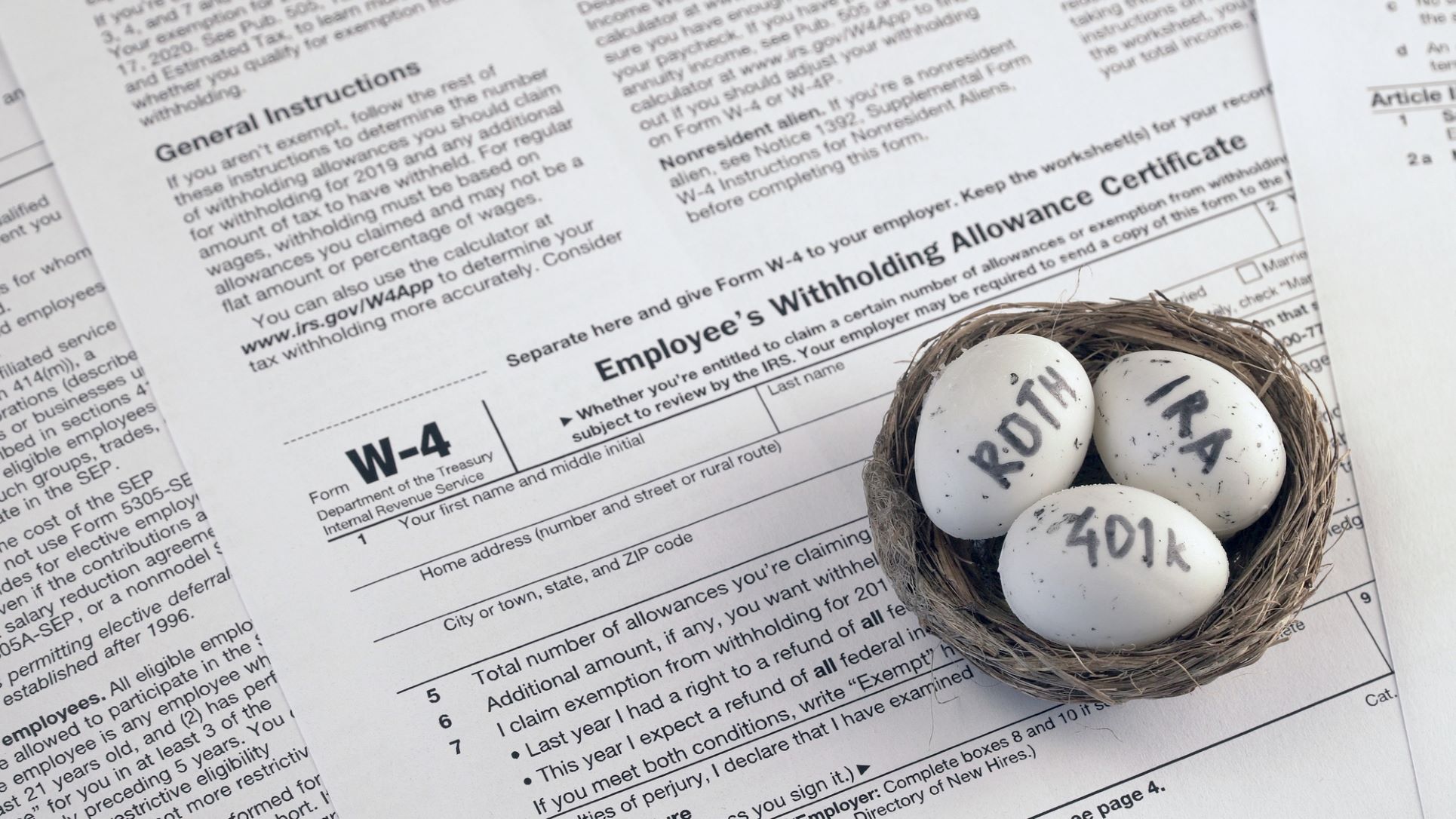Saving for your retirement is an empowering way to be sure you can maintain a good quality of life beyond your employment. Self-directed individual retirement accounts (IRAs) and 401(k) plans are among the most popular approaches to achieving that goal. The main difference between the two is that a self-directed IRA is opened and maintained by an individual, while a 401(k) is provided by employers to their employees.
To get the most out of a plan, it’s always better to start saving as early as possible. There are limits to what you can contribute each year to plans, which means saving early allows you to gain the most compound interest. Nevertheless, if you start saving later in life, you can still make catch-up contributions from the age of 50 onwards.

Around 41% of Americans contribute to a 401(k), while 37% of households own IRAs. We’re going to dive deeper into the differences between a 401(k) and IRA so you can make the most informed choice for your financial security.
401k Retirement Plans
A 401(k) retirement account is offered by employers to their employees. These are funded by workers through their checks and are often bolstered by company contributions. The key features of 401(k) are as follows:
Employer-Sponsored
Unlike an IRA, which is personally driven, a 401(k) is sponsored by the company you work for. In many cases, this is part of a profit-sharing plan by the business. This means the company provides employees with contributions to a retirement plan as a benefit of the company’s ongoing success.
It’s not unusual for businesses to offer a partial match of up to 50% of your annual retirement savings. However, some companies offer a full contribution match, though this is usually capped at a percentage of your annual salary. The average 401(k) contribution match is around 4.7% of annual salary, though this tends to fluctuate between 3% and 5%.
As these plans are employer-sponsored, each company has its own 401(k) eligibility standards. If you’re eligible, your company’s human resources (HR) department can help you enroll.
Tax-Deferred
Many retirement plans offer significant tax benefits to investors. With 401(k) accounts, this largely takes the form of a tax deferment. This means you make your contributions from your paycheck before income tax has been deducted. As a result, your taxable income on your salary is reduced that year and your contributions are considered tax-deductible.
This doesn’t mean investing in a 401(k) allows you to avoid paying tax entirely. The deferment means you only pay taxes on the amounts withdrawn from your retirement savings at a later date.
This is especially beneficial if you’re going to be in a lower tax bracket after retirement than you are during employment. Your 401(k) withdrawals are usually taxed at the ordinary income rate of your tax bracket. As such, you could pay a lower amount of tax during retirement than you do while working.
Investments in Employer-Chosen Funds
Engaging with a 401(k) plan puts your retirement funds entirely under the control of your employer or their chosen plan provider. This is another key way in which 401(k)s differ from IRAs. You’ll be investing a portion of your income but you don’t have any say over how those funds are used.
This can be advantageous if you aren’t confident in your knowledge of markets or finances. You can gain from putting your investment capital into the hands of more experienced professionals. If you work for a trustworthy and stable business, their choices can be a significant boost to your savings. However, this also means the company may take risks with your investment capital that you’re not comfortable with.
Self-Directed Individual Retirement Accounts (IRAs)
A self-directed IRA is a type of retirement account composed of various types of investments chosen directly by the investor. Some of the distinct features include:
Non-Employer Sponsored
While a 401(k) is offered and controlled by employers, a self-directed IRA is not linked to employment in any way. There are some advantages and disadvantages to this. The main drawback is that IRAs don’t have contribution matches from your employer. As such, the capital invested in your account is limited to what you’re able to put into it.
Rather than enrolling in a plan through your employer’s HR department, a self-directed IRA is accessed through specialist custodians. These are companies that offer a wider range of investment options for you to choose from than with a 401(k). Some specialize in distinct forms of investment, like cryptocurrency, precious metals, or certain industry stocks.
Traditional vs Roth
When investing in a self-directed IRA, you also have different plan choices. You can opt for either a traditional or Roth IRA. There are distinct differences between the two.
A traditional IRA is operated under a deferred tax basis, meaning you don’t pay tax up-front, but you do on your withdrawals, like with a 401(k). Roth IRAs use your after-tax income, but you don’t pay taxes on the interest you gain or your withdrawals.
A Roth IRA is only available to those whose gross income calls below caps specified by the IRS. Traditional IRAs, on the other hand, are available to anyone.
One advantage of a Roth IRA is you have penalty-free access to your contributions. While you can’t access the interest you’ve accrued, you can withdraw your capital without paying any additional taxes.
Contribution Limits
Both 401(k)s and self-directed IRAs are subject to contribution limits. IRA caps tend to be significantly lower than those applied to 401(k) plans. These limits are changeable and set by the IRS each year. To give you some idea of the difference, in 2022, if you’re under the age of 50, you can invest up to $6,000 into your self-directed IRA. You can invest up to $20,500 into a 401(k). As such, your choices here can be driven by what capital you have at your disposal to invest.
Flexibility in Investments
Investors usually select a self-directed IRA over a 401(k) due to the flexibility in investment choices. This allows you to create a portfolio that is more robust in potentially volatile markets. For example, you can diversify cryptocurrency investments by focusing on various coins or choosing currencies tied to different industries. It’s feasible to build a plan that includes a balanced range of stocks, real estate, and gold bullion. Importantly, you’re able to adapt as the market changes.
However, the custodians providing your self-directed IRA don’t provide any advice on the best options. As such, continued market research has to be a part of your routine, so you can learn how to properly. You’ll need to understand how to invest in cryptocurrencies, why people are choosing to do so, and which they’re choosing before going all in. Tracking the fluctuations in trading and predicting “hold on for dear life” (HODL) waves can prevent you from losing significant capital. You have more control than you would with a 401(k) but you also have all the responsibility.
The differences between a 401(k) and a self-directed IRA include tax requirements and contribution approaches. But in the end, the choice is really about how involved you want to be in your retirement savings strategy.




